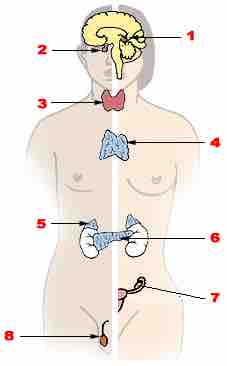The endocrine system is a system of ductless glands that secrete hormones directly into the circulatory system to be carried long distances to other target organs that regulate key body and organ functions.
Some endocrine glands secrete into a portal system rather than the systemic circulation that allows for the direct targeting of hormones. For example, hormones secreted by the pancreas pass into the hepatic portal vein that transports them directly to the liver.
Once within the circulatory system a small proportion of hormones circulate freely, however the majority are bound with a transport protein. Mainly produced in the liver, these transport proteins are hormone specific, such as the sex hormone binding globulin that binds with the sex hormones.
When bound with a transport protein hormones are typically inactive, and their release is often triggered in regions of low hormone concentration or can be controlled by other factors. Therefore, transport proteins can act as a reservoir within the circulatory system and help insure an even distribution of hormones within an organ or tissue.

The endocrine system
The major endocrine glands for men and women (male left, female on the right): 1. Pineal gland 2. Pituitary gland 3. Thyroid gland 4. Thymus 5. Adrenal gland 6. Pancreas 7. Ovary 8. Testis